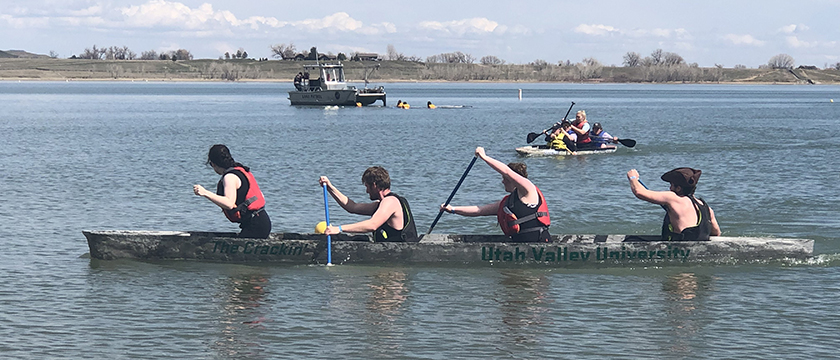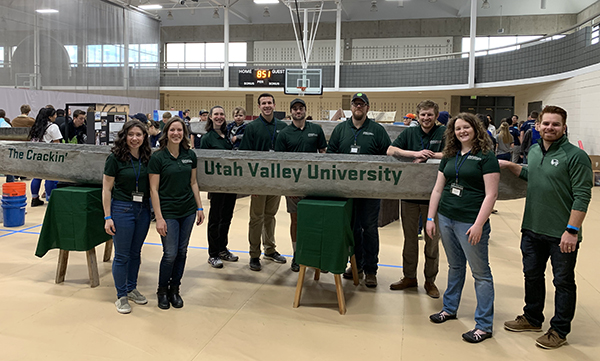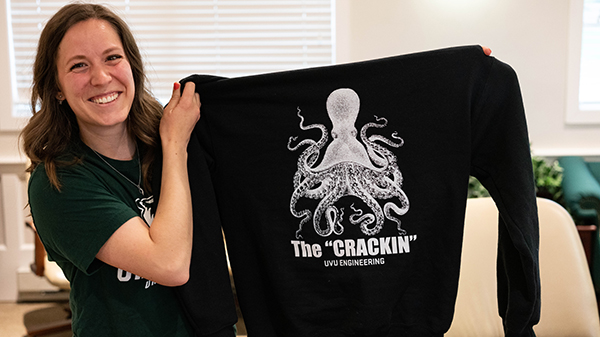

It was the moment of reckoning. In its very first year of existence, the Civil Engineering program from UVU had entered the Concrete Canoe Competition at the University of Colorado Boulder. After hundreds of hours of work designing a canoe, creating a mold, researching the best materials to use, constructing it, and carefully packaging it for transport, they were ready to go.

They were the first team in the water — and they were terrified. The team submerged the canoe as instructed and held their breath. If it sank to the bottom of the lake, they would be responsible for retrieving it. Then, buoyed by foam in the concrete end caps, the canoe popped back to the surface.
The team’s spirits rose with it. “We were euphoric,” says Julie Hansen, one of eight students on the team competing at the Rocky Mountain Regional Conference of the American Society of Civil Engineering. Associate Professor of Civil Engineering Amanda Bordelon led the students, who had begun working on the canoe the previous fall. For such a small group, it was a lot of work. “Everything took at least 50 hours longer than we had originally anticipated,” says Julie, the only woman in the program at the time (although two more entered this year).
Competing among 11 canoes (the twelfth canoe — Utah State’s —broke in transit to the conference), UVU won the two-person slalom and took second in the four-person sprint. It was an auspicious beginning for UVU’s fledgling program, and the other teams were impressed and supportive.
With Utah’s growing population, the demand for more infrastructure is constant, and that requires more engineers. In fall 2018 UVU added programs in civil, electrical, and mechanical engineering to help meet this need. Engineering is a tough program with an enormous amount of homework, but the civil engineering students’ success at the Concrete Canoe Competition indicates that the program is already holding its own against the competition.

Julie hadn’t originally planned to major in engineering. She started out in the UVU Music program. She still loves music and art, but wanting a more lucrative and stable career, she considered other options. “I loved doing puzzles and figuring things out. I also liked math. That sounded like engineering, and that makes money,” she explains. She finds the work rewarding and says, “I get to work with some of the hardest working and delightsome people you’ll ever meet.” She also gets to use her creativity and hopes one day to design reservoirs and riverways. Even as a student she’s working on water management at Jacobs, a worldwide engineering company.
Although she considered other universities, Julie chose UVU because it offered her the merit-based Exemplary Residential Scholarship. That made UVU a better deal financially than other programs. Caring professors who put students ahead of their own research also played into her decision. But she never guessed it would lead to racing a concrete canoe.

